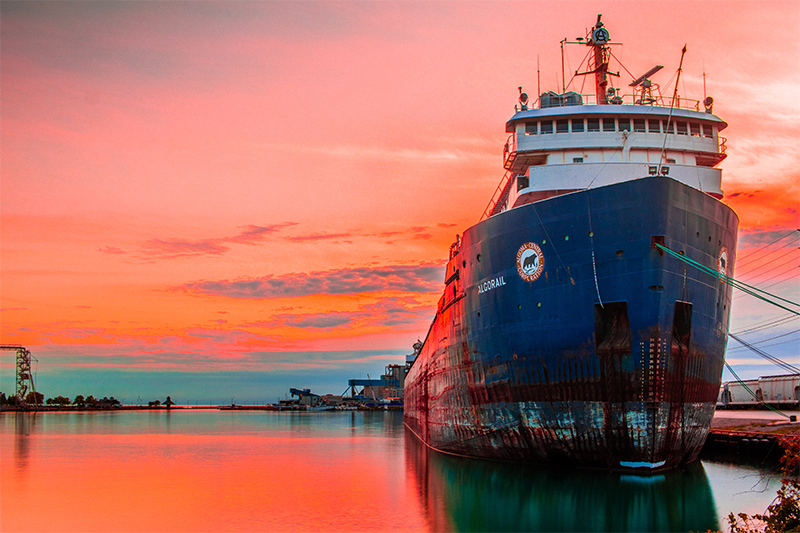1. Port Entry & Navigation Requirements
1.1 Mandatory pre-arrival notification: Submit ETA 72h in advance via JP-MarineTraffic (MLIT Ordinance No.15-2023)
1.2 Navigation rules within 3nm: Speed limit 8 knots, no overtaking (JCG Notice 2024-07)
1.3 Vessels >50m LOA must use certified local pilots (Iho Port Pilotage §4.2)
1.4 Pre-arrival inspection for vessels >20 years old
1.5 Hull fouling assessment before entry
1.6 Digital submission via JP-SWIFT system
2. Vessel Traffic Services (VTS)
2.1 VHF Ch.12 primary working frequency (24/7 monitoring)
2.2 AIS mandatory for vessels >300 GT in port limits
2.3 New VTS radar installed (2024-06-01) with 5nm coverage
2.4 Movement reporting points at Entrance Buoy, Mid-Channel, and Berthing Area
3. Anchorage Regulations
3.1 Designated areas: 33°59’00″N 130°56’30″E to 33°58’30″N 130°57’00″E (Chart 1124A)
3.2 Maximum duration: 48h without permission (Port Ordinance Ch.3)
3.3 Prohibited: Tank cleaning, bunkering, pollution-risk operations
3.4 Anchor watch required (1 officer + 1 crew)
3.5 No-anchoring zones marked with black/yellow buoys
4. Mooring Requirements
4.1 Minimum 6 lines for vessels >50m LOA (2 head/2 stern/2 spring)
4.2 Synthetic lines prohibited at fuel berths (Directive 2024-3)
4.3 Chafing gear inspection every 4h during cargo ops
4.4 Minimum breaking strength: 125% of ship’s GT
5. Cargo Handling
5.1 Timber: Fire watch during ops (Yamaguchi Fire Code)
5.2 Hazardous materials: 96h pre-notice + special inspection
5.3 Grain: Dust suppression required >100 tons/day
5.4 Japan-specific lashing patterns for containers
5.5 Project cargo: Stowage plan pre-approval required
6. Dangerous Goods
6.1 Class 1 explosives prohibited (Port Safety Code Art.45)
6.2 IMDG cargo: Approved stowage plan before ops
6.3 Class 2.1 gases: Special ventilation required
6.4 Radioactive materials: Security escort mandatory
7. Port Security
7.1 ISPS Level 1 with armed patrols (JCG Order 28-2024)
7.2 Photography restrictions in sensitive areas
7.3 Deck patrols every 30min during Level 2
7.4 Crew change: 5-day notice to Immigration
7.5 Anti-piracy drill before arrival
8. Environmental Compliance
8.1 Ballast water: Exchange >200nm from coast (MOE Reg.33)
8.2 Sewage discharge prohibited within 12nm
8.3 Open-loop scrubbers banned in port waters
8.4 Zero discharge policy for all pollutants
8.5 VOC recovery required for tankers
9. Emergency Procedures
9.1 Oil spill: Immediate Ch.16 report + containment
9.2 Medical: 24/7 first aid at North Commercial Berth
9.3 Typhoon signal #3: Depart or secure at typhoon moorings
9.4 Fire alarm: 10-second continuous horn blasts
9.5 Tsunami warning: Red rotating light + siren
10. Port Services
10.1 Tug assistance: Book 24h in advance
10.2 Fresh water: 6h notice for >100 tons
10.3 Bunkering: Max 50 tons/hour transfer rate
10.4 Waste disposal: ¥20,000 minimum fee
10.5 Seafarer center: 2km north of entrance
11. Local Regulations
11.1 Garbage logbook inspection by Port Health
11.2 Fishing from vessel requires ¥10,000 permit
11.3 No food waste discharge in port limits
11.4 Alcohol restrictions in port area
11.5 Noise curfew 2200-0600 hours
12. Weather Operations
12.1 Typhoon prep: Secure cranes 12h before
12.2 Winter (Nov-Mar): Anti-icing equipment mandatory
12.3 Gale warnings (>28 knots): Berthing suspended
12.4 Fog protocol: Reduce to 5 knots + continuous sounding
13. Required Documents
13.1 Original registry for vessels >100 GT
13.2 P&I Club letter for hazardous cargo
13.3 Last port clearance <30 days old
13.4 Crew employment contracts for inspection
13.5 Japan-specific anti-corruption forms





